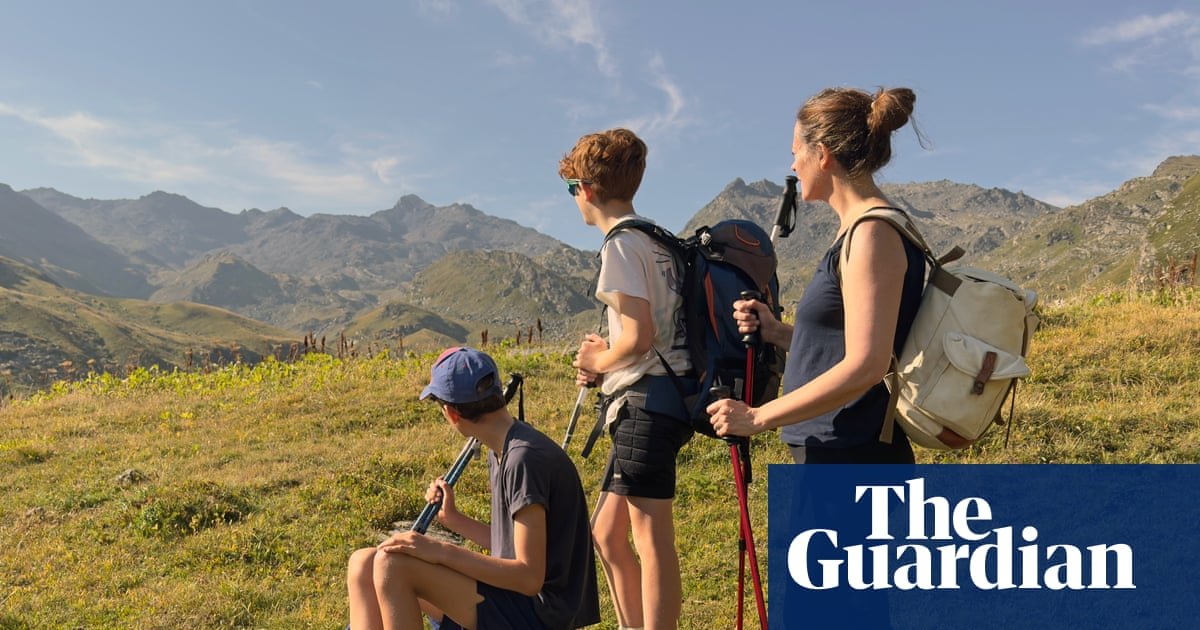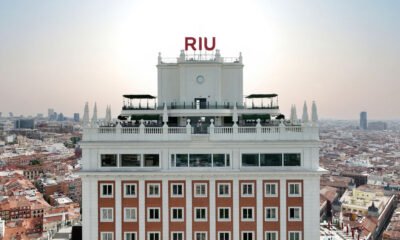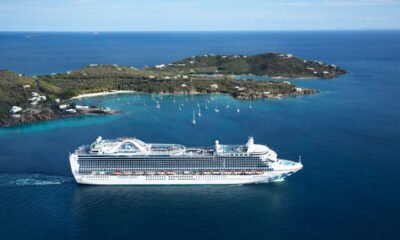Solo Travellers
Without USAID, Conservation and Tourism Projects Have Ground to a Halt

USAID, the “soft power” arm of the federal government that awards grants for education, health care, and environmental conservation to developing countries, was one of the first casualties of Trump’s second term. Billionaire Elon Musk and his Department of Government Efficiency (DOGE) spent a weekend in early February “feeding USAID into the woodchipper,” per his post on X, because of his unfounded belief that it’s a “scam.” The move has translated into the firing of nearly all staff and the cancellation of 83% of its programs. And while the agency was best known for its health initiatives–one study estimates that 14 million people could die by 2030 as a direct result of this pullback—USAID has also been doing critical work that directly impacts travelers since the 1960s, including establishing and maintaining national parks and conservation areas around the globe.
The Amazon was arguably hit the hardest in terms of biodiversity funding. The funding freeze has halted $70 million in grants for conservation projects in Colombia alone–mostly in and around Guaviare, where rapid deforestation jeopardizes decades of progress for endangered species.
Guaviare is one of the most biodiverse corners of the planet, carved up by five-colored rivers that look like liquid rainbows due to an endemic aquatic plant that blooms in them. Near the ancient rock paintings are a series of lagoons where the continent’s famous pink river dolphins are friendlier than their counterparts in the Amazon River, swimming right up to boats, splashing and leap around flirtatiously, even catching rope in their mouth and tugging vehicles through the oxbow lake.
This is the kind of ecotourism draw that offers a real financial incentive for the community to abandon deforestation and poaching in favor of protecting the dolphins and their natural habitats. The area just needed to build the infrastructure for international travelers, who tend to have more requirements for food and lodging than regional visitors, in order to learn how to self-sustain as a global attraction. And the USAID grants were the turning point for starting to generate that local interest in building tourism. “These are the places that are most important to go, because they really need that cashflow to get their business started and going,” says Mogollón. “Many times people from abroad will open the locals’ eyes to the jewels that they have, that they’re living in.”
The effort was working: Colombia’s visitor numbers spiked to a record high in 2023, up nearly 25 percent from the previous year, and the former guerillas and ranchers in Guaviare “were starting to make a small enterprise to bring tourists to this place, to be able to know the river dolphins and to be able to interact a little bit with them and to understand what is the importance of forest conservation for these species,” says Roberto Gomez, who was running the USAID-funded anti-logging program Amazon Alive until March 31.
It was incredibly frustrating for Mogollón and Gomez, then, when the promised funding suddenly vanished, leaving local participants in their programs with a deep sense of betrayal. “It took some time and some effort to convince them that ecotourism could be a very good source of income,” says Gomez. “And suddenly they lose the funds and it’s like, well you deceived me. You said something that wasn’t true.”
Solo Travellers
Your September 2025 Horoscope: A Season of Change Is Here

Moving into the second half of September, it may feel as though it’s you against the music. Venus enters Virgo on September 19, and there’s a solar eclipse in Virgo on September 21. There is some aspect of your creative process that can’t come on the ark you’re building to survive the coming floods, and if it’s not that, perhaps you’re being called to create a new template that feels more current and fresh—more true to the tastes and genres that currently feel exciting to you. And if the canvas is your life, well, where is the tension between your personal enjoyment and your social obligations coming from at the moment? It might be hard to have a five-star experience during the second half of the month, even if you’re at a festival you’ve been looking forward to for months or vacationing in an epic location. Still, becoming more intimate with what you don’t enjoy is a great way to become more intimate with what you do. Take it as a sign of where you can afford to make some changes.
Gemini Rising
Lightning rarely strikes twice in the same spot, and neither does opportunity. But how prepared are you to pivot on your heel when opportunity comes knocking? Because by the time you read this, you may already be swept up in the winds of change (or on a redeye flight to your next speaking gig). The first week of September flips the script on you as Uranus stations retrograde in Gemini for the first time on September 5, followed by an eclipse in your tenth house of career and ambitions on September 7. Additionally, your ruling planet, Mercury, squares Uranus on September 3 while Jupiter forms a trine to the North Node, urging you to break with certain aspects of your personal status quo in order to claim the abundance that’s trying to reach you.
Are you being offered a more lucrative opportunity right now, or possibly breaking up with the “safer” option in order to take a risk on something that might be more rewarding down the line? Either way, continued predictability seems unlikely, and some amount of flexibility and spontaneity is called for. Also, Saturn is now back in your tenth house as of September 1, resurfacing some of the success struggles and slow progress toward mastery and recognition that have defined the past couple years. Let’s be real, it hasn’t been easy getting to where you want to be. You may have even dealt with some blows to your reputation, or a less than supportive boss who didn’t believe that much in your potential. Now, as you enter the final boss round of “making it in the world,” you might be playing with higher stakes, but at least it’s not entirely the same old thing all over again.
As if all that weren’t enough, there are potential changes afoot in your private life as well—perhaps some form of leaving behind your current living situation, or “end of an era” vibes when it comes to home and family. Though these negotiations may be happening in earnest from the second week of September onward, the September 21 eclipse in Virgo sees to it that you don’t remain clinging to a past that is clearly expired. Questions of legacy may also be hugely important here as you potentially make moves with the wellbeing of future generations in mind. Preserve the history you’d wish was available for you to peruse in your grandmother’s attic. Maybe in the future, someone will relish your souvenir collection and travel diaries just as much as you did.
Cancer Rising
Where will the world pull you next, especially now that it’s looking more and more like your personal oyster? The call of the open road gets loud again this month, and this time, you may just answer it all the way. On September 1, Saturn returns to Pisces, your ninth house of big trips, big concepts, and big learning, just in time for that same part of your chart to be eclipsed on September 7. As if that weren’t enough, Mars squares Jupiter from your fourth house of home on September 4, making it not unlikely that you’re actually in the middle of a move right now, or severing your connection to home base in a different way.
Whether you’ve been on an educational path, a spiritual pilgrimage, or an endurance journey with many passport stamps involved, the past two years have led you to this moment. Saying “yes” to the adventure is as much a leap of faith at this point as it is a deeply considered choice knowing the difficulty it may entail. And also, things look pretty different than before with Jupiter now in Cancer. Any figurative plane that struggled to get off the tarmac before may now be primed for takeoff, so if this is an opportunity to go where you weren’t able to go before, you probably already had your mind made up months ago. All that remains is to walk through the door.
Solo Travellers
Free roaming: Your holy grail to solo travel

Imagine you’re on a whirlwind solo trip across continents—livestreaming a sunrise hike in Cappadocia, posting reels in real-time from a café in Santorini, hopping time zones from Tokyo to Toronto—all without ever searching for Wi-Fi or rationing data. With Airtel’s unlimited data roaming plans, staying connected is no longer tied to hotel lobbies or coffee shop hotspots. The moment you land at the airport, your Airtel International Roaming plan auto activates—no scrambling for public Wi-Fi, no waiting in long queues for a local SIM. Whether you’re uploading high-res photos, video calling loved ones, or navigating unfamiliar streets, Airtel’s global coverage ensures your journey never skips a beat. Activating your roaming plan is just as easy—via the Airtel Thanks app, website, or at retail stores, this plan moves with you—adapting to impromptu itineraries and content on the go.
Whether you’re a content creator, a globe-trotter, or a vlogger documenting your journey around the world—with unlimited data and auto-renewals, it is now possible to turn global travel into a spontaneous adventure—so you can focus on the journey, not the logistics. Wherever you go, Airtel becomes your invisible travel companion, keeping you connected, even when you’re far from home.
For more information, click here.
*T&C Apply. Pack calculation done basis 3999/30 days postpaid pack (100 mins/day, speed throttle post use of 30 GB).
Solo Travellers
‘It feels as though the mountains are ours alone’: family-friendly hiking in the French Alps | France holidays

‘This is probably the wildest place in the whole of the Vallée des Belleville,” says Roland, our guide, sweeping one arm across a bank of saw-toothed peaks as though conducting a great, brawny orchestra. My husband, two sons and I are midway through a four-day stretch of the Grand Tour de Tarentaise hiking trail in the French Alps, and we’ve stopped near the top of Varlossière, a roadless side valley among a great arc of mountains that runs to the west of the ski resorts of Val Thorens, Les Menuires and Saint-Martin-de-Belleville. Hiking up here from Gittamelon, a rustic, summer-only mountain refuge in the neighbouring Vallée des Encombres, we’ve paused to exhale breath, and to inhale the primeval views.
High peaks loom either side of us, their shocking green flanks underscored by an elegantly designed bothy and its shepherd-dwelling twin, and we can hear the rush of water far below. It’s midmorning but the moon is low and large in a cloudless sky, adding to the otherworldly scene. Climbing higher, an eagle flies past almost at eye level, no more than six metres away. Though we meet three other hikers on the other side of the Col du Bonnet du Prêtre, the 2,461-metre (8,074ft) pass that leads from Varlossière to the Nant Brun valley – and detect from sheep bells that at least two shepherds must be somewhere among the great folds of these hills – it feels as though the landscape is ours alone.
That may not be the case for long. Soaring temperatures across Europe this summer have fuelled a rush to the mountains, social media funnelling many visitors to the same honeypots and creating infrastructure pressure points; in Italy some farmers in the Dolomites have resorted to installing turnstiles and charging tourists €5 to pass, incensed at having their meadows trampled.
Navigating these challenges is no easy task for Europe’s mountain resorts, which are increasingly encouraging summer tourism as the climate crisis signals a limited lifespan for ski tourism. One of the biggest issues is that many of these new summer visitors are first-timers, unfamiliar with the mores of mountain adventuring: treading gently on the environment, respecting local countryside codes, wearing suitable kit, knowing how to read a map rather than an app (we had no wifi or phone signal for two days of our hike), and packing enough food and water. In France, call-outs to mountain rescue services by inexperienced hikers have risen so sharply that workers now trawl social media looking for potential disaster hotspots in advance.
In an attempt to tackle these issues, the Vallée des Belleville tourist office has introduced a range of summer initiatives to support new hikers, from kids’ mountain skills activity days to free wildlife talks and events. Lower-level footpaths and bike trails for children, pushchair-users and visitors with reduced mobility makes it safer for those groups to access the mountains, and easier for local communities to manage the larger numbers that tend to make use of them. And while challenging marked trails through more remote corners of the mountains are fairly easy to follow, visitors are encouraged to hire a guide (something we are glad of at Col du Bonnet du Prêtre, when Roland tracks down the shepherd owner of an aggressive dog and persuades him to move away from the trail).
It is at our accommodation each night, in mountain refuges, that we really see support for new hikers in action, though. Several have been designed specifically with families and first-timers in mind, including Refuge Plan Lombardie, where we end our 12-mile (19km) hike from Gittamelon.
We are not first-timers, but staying here is a good opportunity to remind ourselves of the rules of refuge culture, and for the boys to hang out with other children. Though we hike in, it’s possible to park about 20 minutes’ away and walk from there, something several guests with preschoolers have done, grateful for the treasure hunt-style sculpture trail the refuge has installed along the route to entice younger visitors uphill.
Though we have seen less than a handful of hikers during the day, we find Refuge Plan Lombardie as packed as a marmot’s burrow. Approaching it in the soft glow of the afternoon, earlier arrivals have already nabbed the terrace’s deckchairs with a view. Instead, we collect beers and lemonades and find a free bench to enjoy them before swapping our boots for the refuge’s borrowed Crocs, and finding our allocated bunk beds.
Refuges like this are more than just places to sleep. Full of city folk temporarily escaping to higher ground, they’re the human equivalent of a centuries-old rhythm of transhumance, where families bring sheep and cows up to the high pastures for the summer months. At dinner, we share a table with a mother from Chambéry who has brought her four-year-old son for his first visit to a refuge. “My friend gave me a list of the most family-friendly ones and I’ve decided to start a new tradition of visiting one every year with my son. I want him to love them as much as I do,” she told us between bites of a Savoyard blueberry version of Eton mess.
The previous evening, in cosy Gittamelon refuge, we’d shared similar tales, and a dorm, with three generations of a Belgian family who were following the same trail as us but in the opposite direction. And the evening before that, we’d followed suit with other families, playing cards at Refuge du Lac du Lou, a modern, child-friendly refuge just 90 minutes’ hike above the resort of Les Menuires.
Between Lac du Lou and Gittamelon we’d hiked with Estelle Roy-Berthaud from Les Menuires tourist office, following the trail through harebells, cotton grass, neon-coloured lichens and, much to the boys’ delight, thickets of wild blueberries. Stopping for lunch with Mont Blanc spearing the horizon in the distance, I ask her how the valley is managing increasing summer numbers.
“Summer tourism is a relatively new concept here, so we are not seeing the overtourism issues experienced by more well-known summer destinations in the Alps,” she says. “We’re also protected by not having too many places to stay. In winter, we have around 27,000 beds, but in summer this reduces to just 8,000, so this naturally restricts the number of people in the valley.”
Further along the trail, at Plan Lombardie, I wake in the night and slip out of one of those beds. Outside, the sky is luminous with stars, while the peaks and folds of the land are now entirely black beyond the winking of a distant light – a shepherd’s stove, perhaps, or the torch of a camper. The Belleville valley still feels wonderfully wild tonight.
Transport from London to Chambéry was provided by Flixbus; return fares from £89pp. Half-board accommodation at Refuge du Lac du Lou from €39 children/€69 adults, Refuge Gittamelon €46pp, and at Refuge Plan Lombardie from €32 children and €52 adults. Hiking guides from €25 for a half-day (guides-belleville.com). More information at lesmenuires.com
-

 Brand Stories1 month ago
Brand Stories1 month agoBloom Hotels: A Modern Vision of Hospitality Redefining Travel
-

 Brand Stories1 month ago
Brand Stories1 month agoCheQin.ai sets a new standard for hotel booking with its AI capabilities: empowering travellers to bargain, choose the best, and book with clarity.
-

 Destinations & Things To Do1 month ago
Destinations & Things To Do1 month agoThis Hidden Beach in India Glows at Night-But Only in One Secret Season
-

 Destinations & Things To Do1 month ago
Destinations & Things To Do1 month agoUntouched Destinations: Stunning Hidden Gems You Must Visit
-

 AI in Travel1 month ago
AI in Travel1 month agoAI Travel Revolution: Must-Have Guide to the Best Experience
-

 Family Travel2 months ago
Family Travel2 months agoThings to Do Indoors in New Jersey
-

 Brand Stories2 months ago
Brand Stories2 months agoVoice AI Startup ElevenLabs Plans to Add Hubs Around the World
-

 Brand Stories1 month ago
Brand Stories1 month agoContactless Hospitality: Why Remote Management Technology Is Key to Seamless Guest Experiences
-

 Restaurants & Food5 months ago
Restaurants & Food5 months ago10 New Restaurants In Delhi NCR To Head To This Month
-

 Brand Stories2 months ago
Brand Stories2 months agoHow Elon Musk’s rogue Grok chatbot became a cautionary AI tale











You must be logged in to post a comment Login